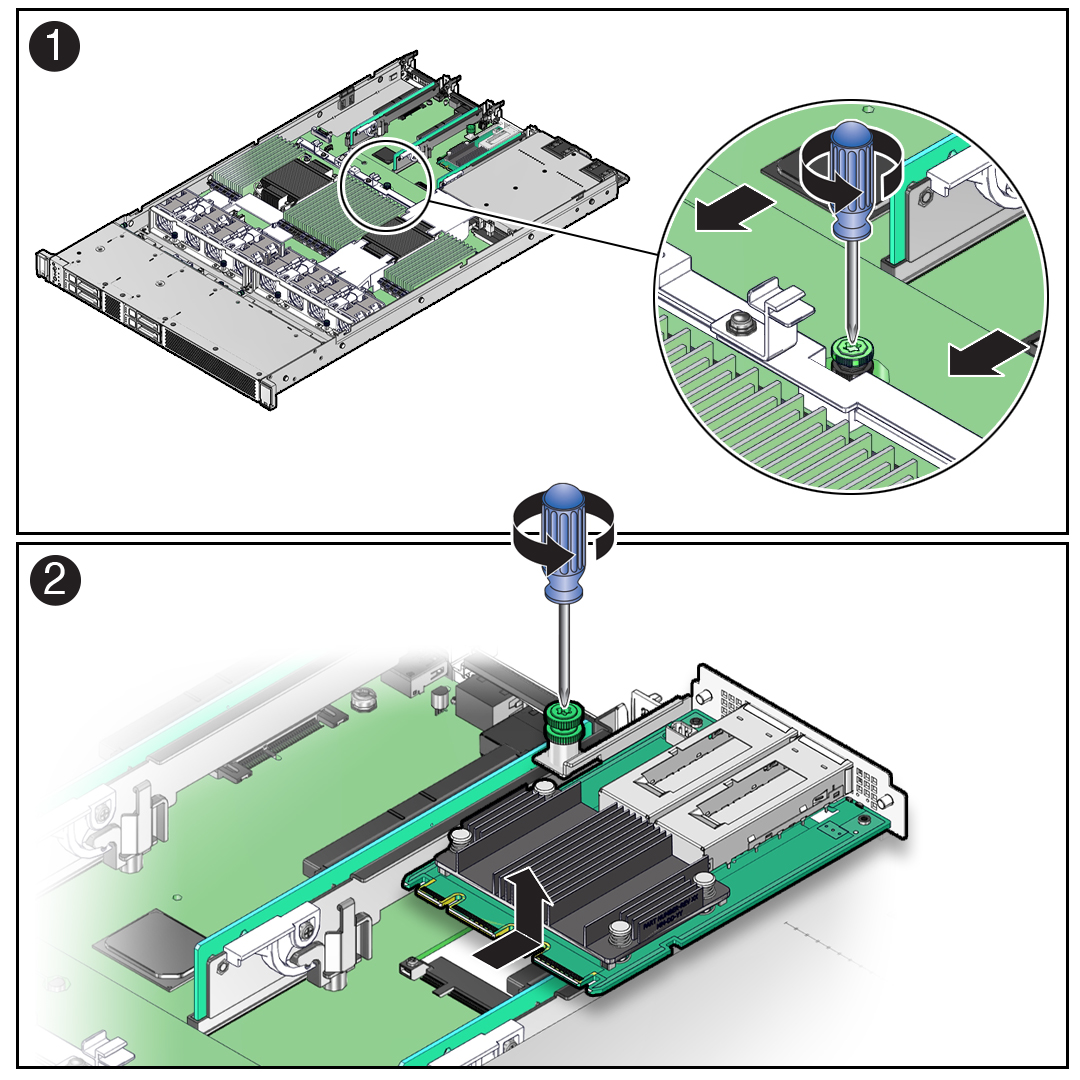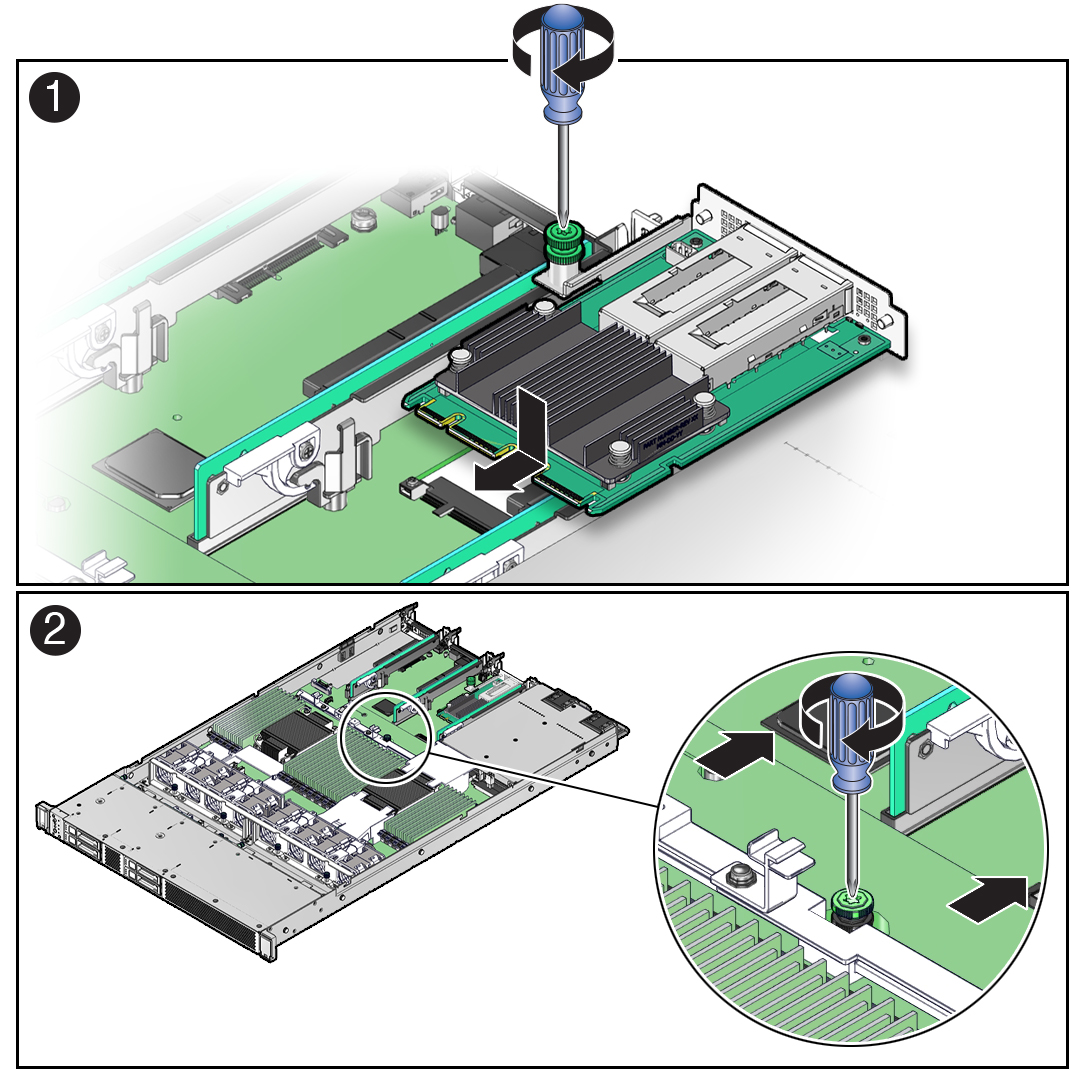18 Servicing the OCP Network Interface Card (FRU)
The following section describes how to service and install the Open Compute Project (OCP) version 3.0 (V3) Network Interface Card (NIC). The OCP V3 NIC is a field-replaceable unit (FRU). For more information about FRUs, see Illustrated Parts Breakdown and Field-Replaceable Units.
Caution:
The OCP NIC must be removed and replaced only by authorized Oracle Service personnel.Caution:
Ensure that all power is removed from the server before removing or installing the OCP NIC. You must disconnect all power cables from the system before performing these procedures.Caution:
These procedures require that you handle components that are sensitive to electrostatic discharge. This sensitivity can cause the component to fail. To avoid damage, ensure that you follow electrostatic discharge safety measures and antistatic practices. See Electrostatic Discharge Safety.This section covers the following procedures:

